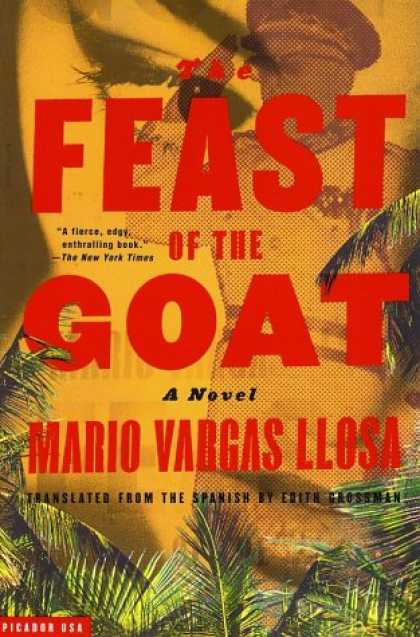 Beyond the fact that he will surely win the Nobel Prize one of these years, Peruvian Mario Vargas Llosa also ran against Alberto Fujimori in the 1990 presidential elections.
Beyond the fact that he will surely win the Nobel Prize one of these years, Peruvian Mario Vargas Llosa also ran against Alberto Fujimori in the 1990 presidential elections. I just finished my third book of his, The Feast of the Goat, a narrative about the Trujillo government in the Dominican Republic.

I also read his Death in the Andes, about terrorism in Peru during the 1980s, and The Bad Girl, a story of obsession that starts in Peru and follows the characters through Europe. They're all worth reading, but The Feast of the Goat is by far his best book in my opinion.
Vargas Llosa's page on the New York Times is pretty interesting, with articles going back to the early seventies. You can see the ups and downs of his political and literary career.
The high (or maybe low) point of his political career was his run for president in 1990. He lost to no-name Alberto Fujimori, who would then become one of the most controversial Peruvian presidents in the last century.
The presidential contest took place in a country torn by terrorism and rocked by economic instability. In the 1980s, inflation remained above 50% and an estimated 30,000 people had been murdered by domestic terrorists called The Shining Path.
Vargas Llosa, running from the right, campaigned on a politically-weak but possibly economically sound argument--that the economy needed drastic (and neoliberal) reforms that would be hard on Peruvians.
Needless to say, most Peruvians didn't see the famous novelist and world-traveler (he lived in Europe for many years) as "one of them." Nor did they see his plan for Peru as anything more than an attempt to lay the country's burdens on the poor.
But they did see "el chino" Fujimori as "one of them," surprisingly, considering his Japanese heritage. Ironically, as soon as Fujimori won the election, he was convinced by international lenders that the only way out of Peru's economic meltdown was to take just the measures that Vargas Llosa had campaigned on.
Fujimori's economic reforms were seen as a positive step for the country. He was credited with ridding the country of terrorism, but Peru paid the price. Fujimori suspended the constitution and dissolved the Congress. In 2000, he fled to Japan after his cohort Vladimiro Montesinos was caught on tape bribing various Congressmen. Fujimori was recently convicted of grave violations of human rights in his campaign against the Shining Path.
But enough about Fujimori. He'll get a dedicated post of his own soon.
Who knows what decisions Vargas Llosa would have made in his place, or if Peru would have been better off. But one thing's for sure. It would have been hard to be president and keep up this wonderful literature. Thanks for the books.
He's coming out with one about the Congo soon, so keep your eyes open.



















 Sergio was our official negotiator. He uses his charm to work the vendors. "Nada menos?" ("Nothing less?") he usually asks right off the bat. He was pretty good at finding a deal. Most veggies and fruits were 60 cents/kilogram.
Sergio was our official negotiator. He uses his charm to work the vendors. "Nada menos?" ("Nothing less?") he usually asks right off the bat. He was pretty good at finding a deal. Most veggies and fruits were 60 cents/kilogram. 































.jpg)